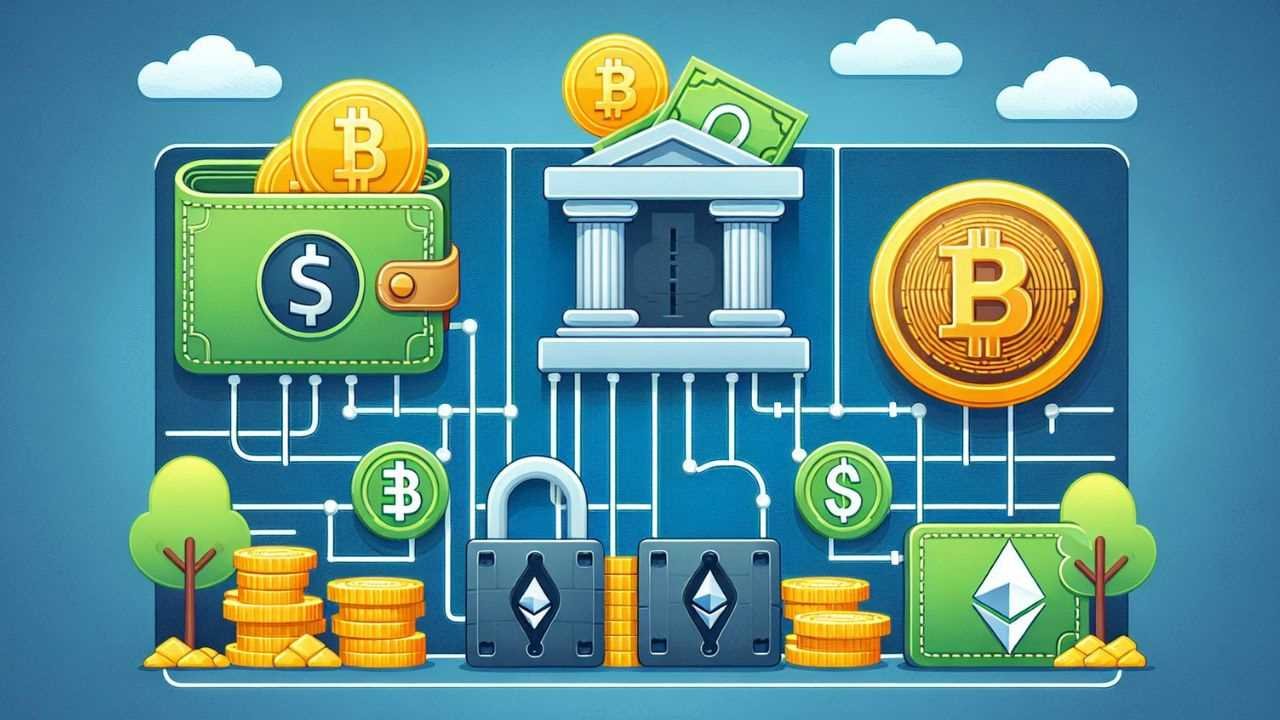Explore the Difference between digital currency and cryptocurrency. Learn their features, examples, and how to navigate the evolving financial landscape.
Difference Between Digital Currency and Cryptocurrency
With words like “digital currency,” “cryptocurrency,” and “CBDCs” floating around, it’s easy to get overwhelmed in the world of digital finance. Let’s break down the distinctions between digital currency and cryptocurrency and the growing role of each.
Digital Currency: The Broad Umbrella
Digital currency is an overarching term for any form of money that exists solely in electronic form. Think of it as the digital version of the paper bills and coins in your wallet. Here’s what sets digital currency apart:
- Centralized: Typically issued and regulated by a central bank or government.
- Examples: Online banking funds, mobile payment apps (like PayPal or Venmo), and even the points you earn on your credit card.
Cryptocurrency: The Decentralized Disruptor
Cryptocurrency is a specific type of digital currency that has shaken up our understanding of money. Here are its defining features:
- Decentralized: Operates on a blockchain, a distributed ledger technology that exists across a network of computers. This eliminates the need for central intermediaries like banks.
- Cryptography: Uses advanced encryption techniques to secure transactions and control the creation of new currency units.
- Examples: Bitcoin, Ethereum, Dogecoin, and countless others.
Key Differences: A Table for Clarity
| Feature | Digital Currency | Cryptocurrency |
| Issuance | Centralized (governments, banks) | Decentralized (network of computers) |
| Regulation | Heavily regulated | Varying levels of regulation, often less strict |
| Transparency | Typically opaque | Public ledger creates transparency |
| Volatility | Relatively stable | Prone to higher price fluctuations |
| Use Cases | Everyday payments, online transactions | Investment, speculation, some payments |
The Rise of CBDCs: A Hybrid Approach
Central Bank Digital Currencies (CBDCs) are a newer phenomenon that seeks to blend aspects of both digital currency and cryptocurrency. They are digital versions of a country’s fiat currency (e.g., a digital dollar). While they are centralized, they may leverage some aspects of blockchain technology. CBDCs are still under development with countries like China taking the lead.
Which Is Right for You?
The best option depends on your needs:
- Everyday Transactions: Digital currencies backed by your bank are likely the safest and most efficient.
- Investment/Speculation: Cryptocurrencies offer potential high returns (and high risks) for those with an appetite for volatility.
- Future potential: CBDCs might offer convenience and efficiency, but they are still in their early stages.
Conclusion on Difference Between Digital Currency and Cryptocurrency
The lines between digital currency and cryptocurrency are blurring. Understanding these differences will help you navigate the rapidly changing landscape of money. Whether you’re focused on convenience, security, or investment potential, understanding how these financial instruments function is essential.
FAQs: Difference Between Digital Currency and Cryptocurrency
1. What is digital currency?
Digital currency refers to any form of money existing solely in electronic form, akin to the digital version of physical cash. It includes funds in online banking, mobile payment apps, and even credit card rewards points.
2. How does digital currency differ from cryptocurrency?
Digital currency, usually centralized and regulated by a central authority, contrasts with cryptocurrency, which operates on decentralized blockchain technology and utilizes advanced cryptography for security.
3. Can you provide examples of digital currencies and cryptocurrencies?
Examples of digital currencies include online banking funds, PayPal, Venmo, and credit card reward points. Cryptocurrencies include Bitcoin, Ethereum, Dogecoin, among others.
4. What are Central Bank Digital Currencies (CBDCs)?
CBDCs are digital versions of a country’s fiat currency, issued and regulated by central banks. They aim to combine elements of digital currency and cryptocurrency, potentially leveraging blockchain technology while maintaining centralization.
5. How do I choose between digital currency, cryptocurrency, and CBDCs?
The choice depends on your specific needs. For everyday transactions, digital currencies provided by banks offer safety and efficiency. Cryptocurrencies are suitable for investment and speculation, albeit with higher risks. CBDCs, still in development, might offer future convenience and efficiency.
6. Why is it important to understand the differences between digital currency and cryptocurrency?
Understanding these distinctions is crucial for navigating the evolving landscape of finance. Whether you prioritize convenience, security, or investment potential, comprehension of these financial instruments is essential.
Savita is a passionate finance writer with a strong background in the world of money management and financial planning. With over 4 years of blogging experience, she has been helping readers simplify complex financial topics and make smarter money decisions.

